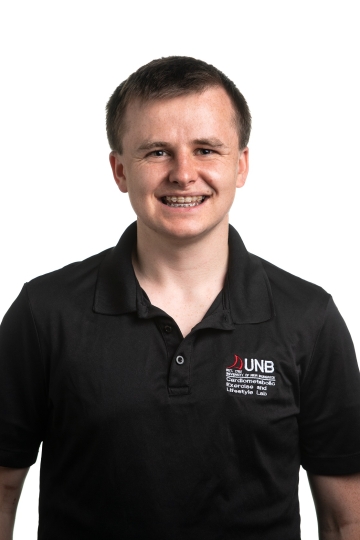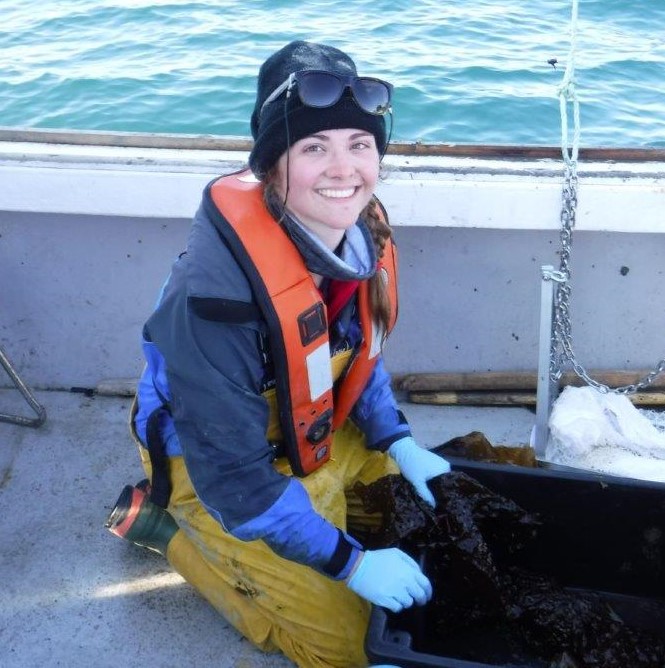
Isabel Hilgendag in the field collecting samples in the Arctic.
Isabel Hilgendag
MSc Student (Biology)
University of Waterloo
Learn About My Career
I look for heavy metals, such as mercury, in Arctic marine animals, to ensure they are safe to eat.
I was born/grew up in: I was born and grew up in Brantford, Ontario.
I now live in: I currently live in Brantford, Ontario.
I completed my training/education at: I completed my Bachelor of Science degree in Environmental Science at Laurentian University. During this time, I spent a summer doing research in Germany at the University of Konstanz. I’m now completing my Master of Science degree in Biology at the University of Waterloo.
I study Arctic marine animals to make sure they are safe to eat. I look for heavy metals, such as mercury. In my research, I get to do all kinds of things! This includes spending time outdoors collecting samples, studying these samples in the laboratory, and doing research or writing up results in my office.
Usually once a year, I get to travel to Iqaluit, Nunavut. There I spend several weeks going on daily boat trips to collect samples in Frobisher Bay. My samples include fish, different kinds of invertebrates such as water insects, and tiny zooplankton. I collect these animals with different kinds of nets and trawls. Once I’ve collected them, I sort them, and freeze them.
In the laboratory, I get to use something called a freeze-drier. This sucks all the moisture out of frozen tissue. When animal tissue is really dry, it can be preserved without being frozen. After I’ve done that, I usually grind the samples into a powder. I can analyze this powder for different things. One of those things is mercury, a heavy metal.
I use a machine called a Direct Mercury Analyzer. This machine heats the sample until it catches fire and burns. It then analyzes the gases produced and tells me how much mercury is in it. I also use a microanalytical balance to weigh small amounts of powder for other types of analyses. A microanalytical balance is a fancy word for a very precise weighing scale!
When I’m in the office, some of the things I do include reading scientific literature and writing my thesis or manuscripts for publication. Sometime I analyze the data I’ve collected with different kinds of computer software.
I also teach undergraduate courses and run laboratory activities. Some days, I’m in a classroom or laboratory teaching about science. I get to mark tests or lab reports, and meet with students who have questions.
When I was in Grade 11 and 12, I had no idea what I wanted to do. I knew I wanted to go to university, but I didn’t know what program I wanted to take. I remember flipping through the pamphlets of several universities. I would stop at programs that peaked my interest and read about the potential career options. I liked science, but I didn’t think I was smart enough. The thought of pursuing a degree in science at a university was beyond daunting!
I finally decided I would study environmental science. I’ve loved nature since I was a kid. After taking high school chemistry classes, I had a strong interest in environmental contaminants. I began my BSc at the University of Ottawa. After two years, I switched to Laurentian University to gain more practical experience. In my third year, I spent a summer doing research at the University of Konstanz in Germany.
After I completed my BSc, I spent a summer working for a professor at the University of Waterloo. I learned a lot about doing research in northern ecosystems. I even had the opportunity to do research in the Northwest Territories, which was a phenomenal experience! I liked it so much, I decided to pursue an MSc in Biology at the University of Waterloo. I’m now doing research on mercury in Arctic marine food webs in the waters near Iqaluit, Nunavut.
I love doing research! I’m really excited to do something I care about, something that has a positive impact on others. I’m grateful for the opportunities I have to travel to places in northern Canada. I get to meet the people my research will help. I also get to discover and experience our natural world.
I like that I get to do a variety of things. Whether it’s working in the office, in the laboratory, outside, or in front of a classroom of curious students. I’ve always been very interested in contaminants in the environment. I find it very exciting to be doing something that I’m passionate about. I also like that my job can be fast-paced, challenging, and that there’s always room for improvement.
In my research, I investigate the presence of mercury in Arctic marine ecosystems. Mercury is a toxic heavy metal. This is important because many people who live in the Arctic rely on hunting and fishing for food. Fish that have high levels of mercury can be a major health concern for the people who eat them.
In my research, I’m investigating how much mercury is in fish, and their prey. I’m trying to understand why these amounts may be high or low. This research will help make sure the fish are safe to eat. It will also help us understand how environmental changes, due to climate change, might affect food safety in the future.
I’m interested in and do a lot of different things. I enjoy yoga, playing Ultimate Frisbee, tennis, and going scuba diving. I like to go hiking, backcountry camping, and travelling the world. I also like learning different languages.
Pursuing a career in science can sound scary and daunting. If you are interested, and prepared to work hard, there are so many different and interesting career options. Believe in yourself and pursue what you’re passionate about. If you’re excited about it and you know it’s something you would love to do, then put your doubts aside and give it a go! The worst thing that could happen is that you realize you want to do something else. In that case, at least you know you’ve tried. Always try your best and be open to new opportunities.
What I do at work
I study Arctic marine animals to make sure they are safe to eat. I look for heavy metals, such as mercury. In my research, I get to do all kinds of things! This includes spending time outdoors collecting samples, studying these samples in the laboratory, and doing research or writing up results in my office.
Usually once a year, I get to travel to Iqaluit, Nunavut. There I spend several weeks going on daily boat trips to collect samples in Frobisher Bay. My samples include fish, different kinds of invertebrates such as water insects, and tiny zooplankton. I collect these animals with different kinds of nets and trawls. Once I’ve collected them, I sort them, and freeze them.
In the laboratory, I get to use something called a freeze-drier. This sucks all the moisture out of frozen tissue. When animal tissue is really dry, it can be preserved without being frozen. After I’ve done that, I usually grind the samples into a powder. I can analyze this powder for different things. One of those things is mercury, a heavy metal.
I use a machine called a Direct Mercury Analyzer. This machine heats the sample until it catches fire and burns. It then analyzes the gases produced and tells me how much mercury is in it. I also use a microanalytical balance to weigh small amounts of powder for other types of analyses. A microanalytical balance is a fancy word for a very precise weighing scale!
When I’m in the office, some of the things I do include reading scientific literature and writing my thesis or manuscripts for publication. Sometime I analyze the data I’ve collected with different kinds of computer software.
I also teach undergraduate courses and run laboratory activities. Some days, I’m in a classroom or laboratory teaching about science. I get to mark tests or lab reports, and meet with students who have questions.
My career path is
When I was in Grade 11 and 12, I had no idea what I wanted to do. I knew I wanted to go to university, but I didn’t know what program I wanted to take. I remember flipping through the pamphlets of several universities. I would stop at programs that peaked my interest and read about the potential career options. I liked science, but I didn’t think I was smart enough. The thought of pursuing a degree in science at a university was beyond daunting!
I finally decided I would study environmental science. I’ve loved nature since I was a kid. After taking high school chemistry classes, I had a strong interest in environmental contaminants. I began my BSc at the University of Ottawa. After two years, I switched to Laurentian University to gain more practical experience. In my third year, I spent a summer doing research at the University of Konstanz in Germany.
After I completed my BSc, I spent a summer working for a professor at the University of Waterloo. I learned a lot about doing research in northern ecosystems. I even had the opportunity to do research in the Northwest Territories, which was a phenomenal experience! I liked it so much, I decided to pursue an MSc in Biology at the University of Waterloo. I’m now doing research on mercury in Arctic marine food webs in the waters near Iqaluit, Nunavut.
I am motivated by
I love doing research! I’m really excited to do something I care about, something that has a positive impact on others. I’m grateful for the opportunities I have to travel to places in northern Canada. I get to meet the people my research will help. I also get to discover and experience our natural world.
I like that I get to do a variety of things. Whether it’s working in the office, in the laboratory, outside, or in front of a classroom of curious students. I’ve always been very interested in contaminants in the environment. I find it very exciting to be doing something that I’m passionate about. I also like that my job can be fast-paced, challenging, and that there’s always room for improvement.
How I affect peoples’ lives
In my research, I investigate the presence of mercury in Arctic marine ecosystems. Mercury is a toxic heavy metal. This is important because many people who live in the Arctic rely on hunting and fishing for food. Fish that have high levels of mercury can be a major health concern for the people who eat them.
In my research, I’m investigating how much mercury is in fish, and their prey. I’m trying to understand why these amounts may be high or low. This research will help make sure the fish are safe to eat. It will also help us understand how environmental changes, due to climate change, might affect food safety in the future.
Outside of work I
I’m interested in and do a lot of different things. I enjoy yoga, playing Ultimate Frisbee, tennis, and going scuba diving. I like to go hiking, backcountry camping, and travelling the world. I also like learning different languages.
My advice to others
Pursuing a career in science can sound scary and daunting. If you are interested, and prepared to work hard, there are so many different and interesting career options. Believe in yourself and pursue what you’re passionate about. If you’re excited about it and you know it’s something you would love to do, then put your doubts aside and give it a go! The worst thing that could happen is that you realize you want to do something else. In that case, at least you know you’ve tried. Always try your best and be open to new opportunities.
When I was a student I enjoyed:
- Foreign Languages
- Geography
- History
- Literature and Language Arts
- Science
- Music
When I was a student, I would describe myself as someone who:
- Brought people together
- Liked helping people
- Played on a sports team
- Was motivated by success
- Engaged in volunteer activities
- Liked being given specific instructions
- Liked reading
- Always threw the best parties
- Felt great satisfaction in getting good grades
- Wasn’t sure what I wanted to do
- Learned best “by doing”
Related Topics
Explore More Career Profiles
-
Brianna Lummerding
Career Profiles
Agronomic Innovation Manager
I look after all things related to soil management for a group of retailers. -
Li Tan (he/him)
Career Profiles
Molecular Lead
I coordinate the day-to-day operations in the DNA Extraction Lab. -
Tyler Morhart (video)
Career Profiles
Scientist, Beamline Responsible - SyLMAND
I am responsible for the SyLMAND beamline at the Canadian Light Source synchrotron facility. -
Li Tan (Video)
Career Profiles
Molecular Lead
I coordinate the day-to-day operations in the DNA Extraction Lab. -
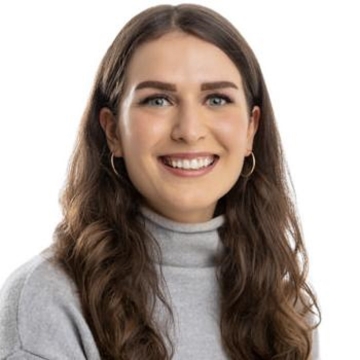
Rashell Featherstone (she/her)
Career Profiles
Senior Program Associate
I coordinate projects for the development of new products at STEMCELL. -
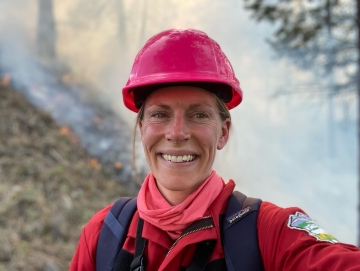
Kira Hoffman (she/her)
Career Profiles
Postdoctoral Researcher/Fire Ecologist
I am a researcher at both a university and a not-for profit organization where I am gaining experience to become a senior researcher. -
Zoë Ehlert (Video)
Career Profiles
Manager, Marker Assisted Breeding
I lead a team that develops canola crops by breeding plants with traits we are looking for. -
Zoë Ehlert
Career Profiles
Manager, Marker Assisted Breeding
I lead a team that develops canola crops by breeding plants with traits we are looking for. -
Jennifer Baltzer (she/her)
Career Profiles
Professor and Canada Research Chair in Forests and Global Change
I work at a university, teaching students and conducting research on the impact of climate change on forests in Canada and around the world. -
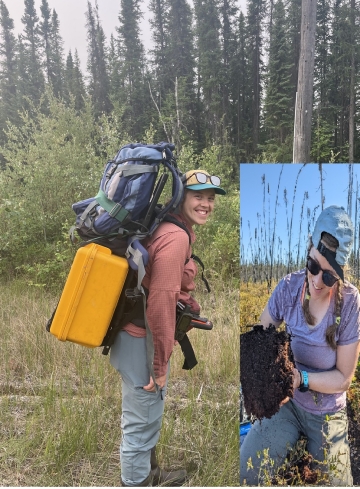
Caitlyn Lyons (she/her)
Career Profiles
Ph.D. Candidate
I am working towards my PhD and studying the forests in the Northwest Territories. -
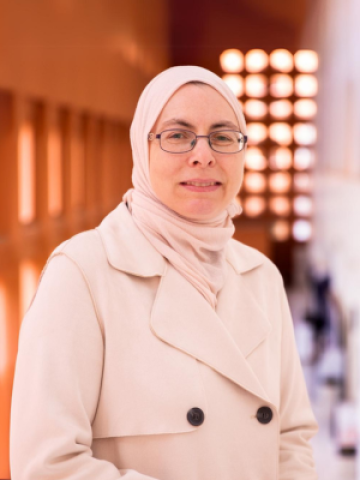
Joann Whalen
Career Profiles
Professor at the Faculty of Agricultural and Environmental Sciences,
I teach advanced courses on how to manage soils to produce healthy, nutritious food and maintain healthy ecosystem functions.
